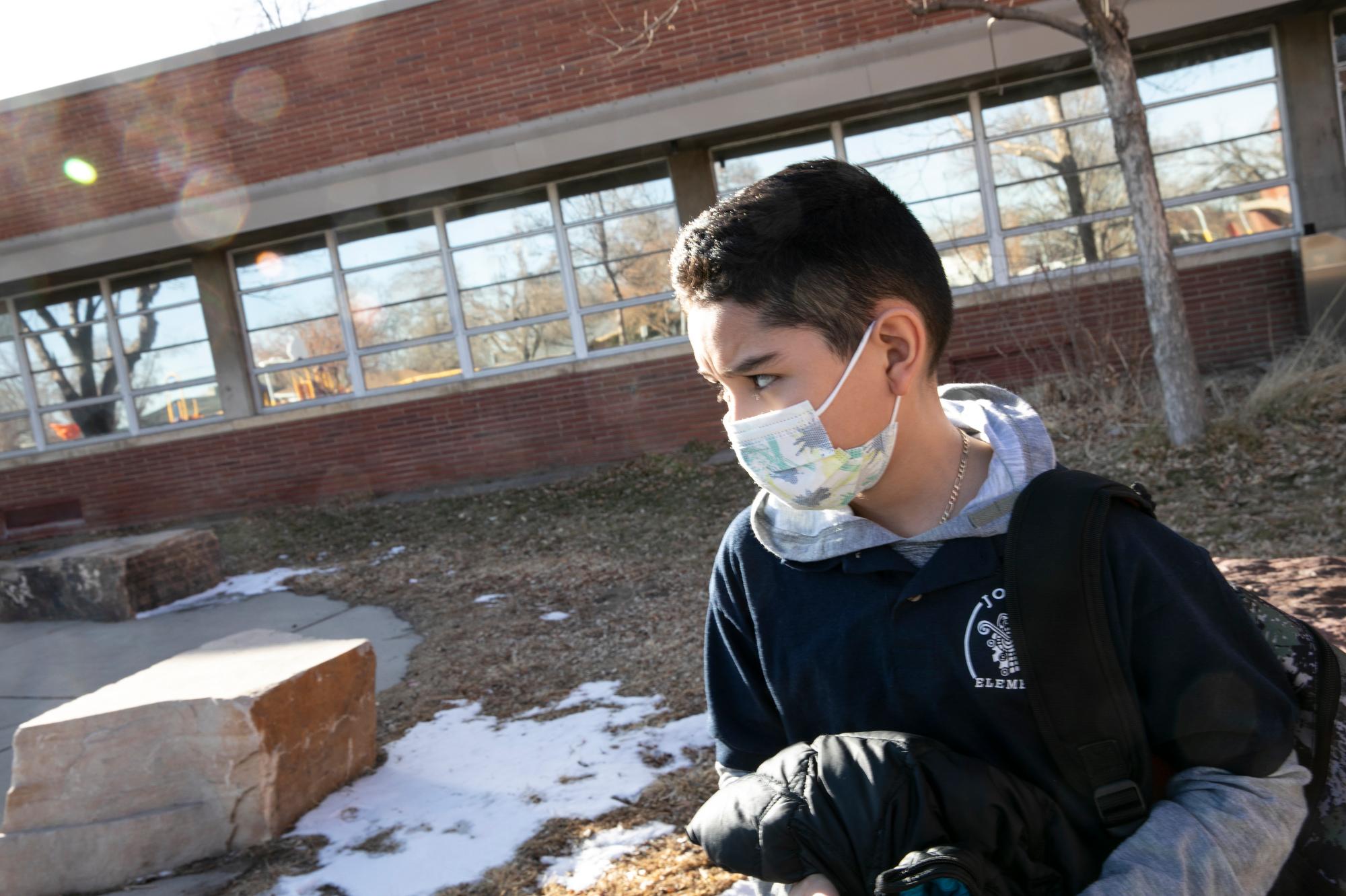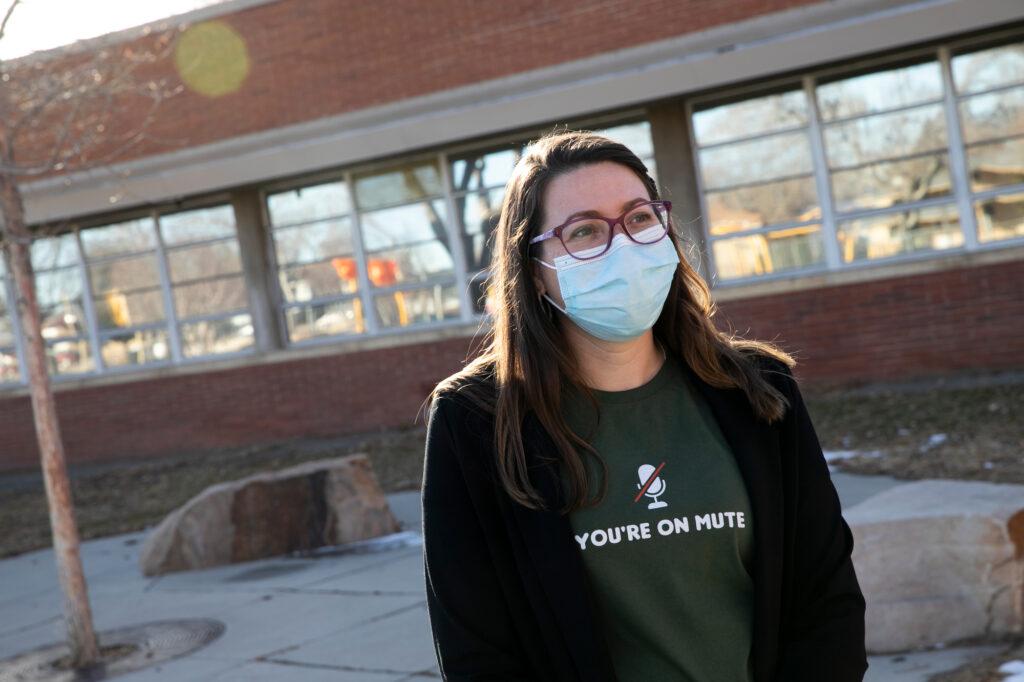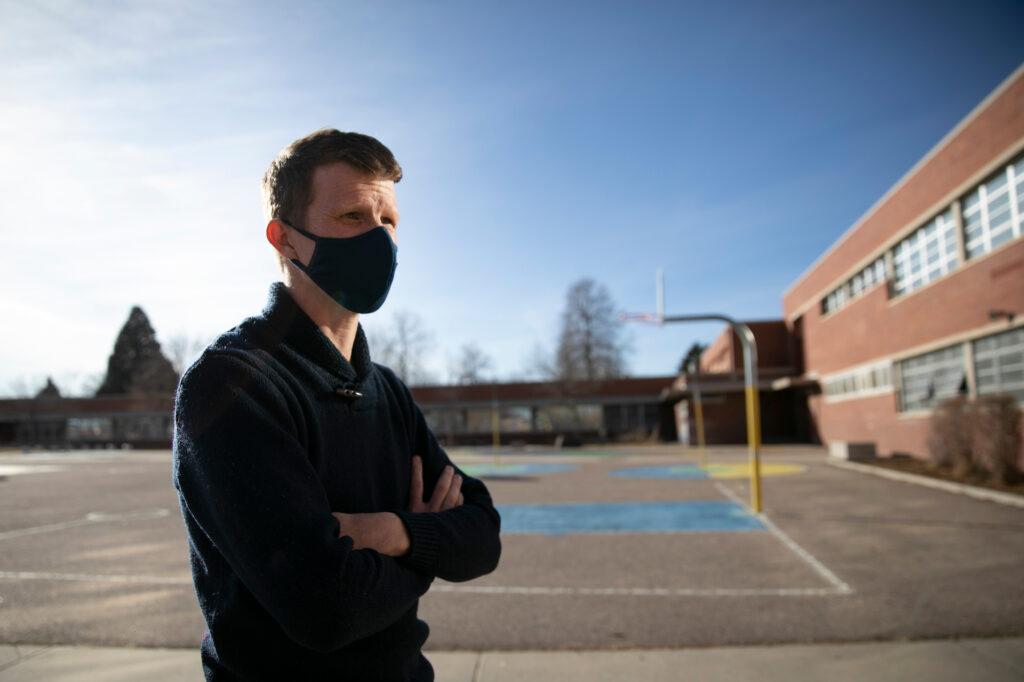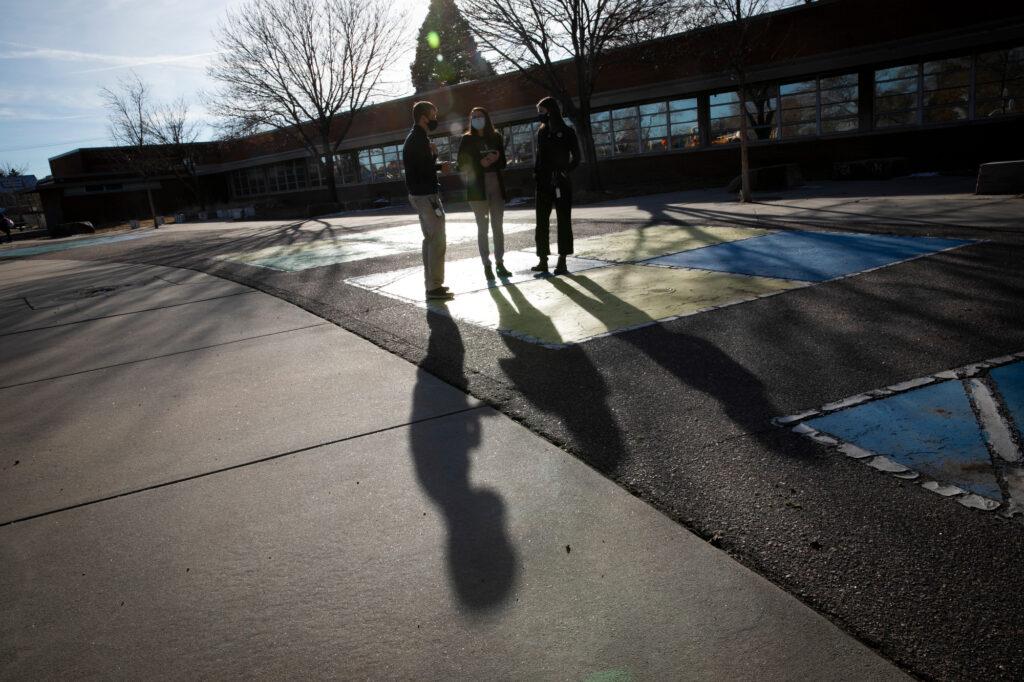
You couldn't see Edgar Redondo's smile because he was wearing a mask.
But the 5th grader who attends Denver's Johnson Elementary said he was happy to finally be back in the school building — for the first time since Thanksgiving.
Denver Public Schools reopened in-person learning for preschool through fifth grade students Monday, along with older students enrolled in newcomer and special education centers. Secondary students — middle and high school ones — will begin a gradual phase-in to in-person learning Jan. 19-29 with individual schools determining whether learning is in-person or hybrid.
Edgar’s favorite thing about the day?
"Seeing my friends and my teacher and learning more things in person," he said.
Math is Edgar’s favorite subject, and he was eager to do it with his teacher in a classroom.
"It was pretty weird to do at home," he said. Edgar said he also loved being back at recess and having the chance to play soccer, football, and basketball with his friends.
He said he is a little nervous about being in school "because the mutated coronavirus was here in Colorado and I'm kinda scared that I might get infected."
But he said he and his family are taking precautions, like frequent hand washing. Johnson Elementary Principal Elliott Lepert said about 65 percent of his students were back in school, with the rest choosing to continue learning remotely.
And what the students found was indeed different than what they are likely very used to. Edgar said that in the morning, none of his classmates talked, nervous because they hadn’t seen each other in person for so long.
“But when they got used to it, people were talking again,” Edgar said.
Even though her students were divided from each other by plastic barriers, Edgar’s teacher, Emmalie Moseley, said “it was beautiful and joyous to hear what learning really actually sounds like.”

She said that online her students were often too shy to talk to one another in breakout rooms. But Monday, through plastic barriers, her students exchanged ideas with one another during a literacy assignment.
“Just being in person they’re able to engage on a much deeper level and learn way more in one class session than they normally would because they’re talking to each other.”
Moseley said she wasn’t too nervous about going back to the building.
“I believe in the science of masks and social distancing,” she said. “While it may not be 100 percent safe, it's a lot safer than say going to a restaurant and eating indoors where everyone has their mask off for an extended period of time.”
She said it was important for her students to return to school because many don’t have good internet connections at home.
Returning to in-person learning isn’t without its challenges. Moseley has 14 students in class but 10 are still at home, learning remotely. She’s discovered it’s too difficult for the students at home to follow class discussions when she livestreams. So, Moseley jumped back and forth between having one group work independently while she taught the other.
“I'm trying my best to make them feel like they're having time with me,” she said. “It’s almost like I have two separate classrooms.”
She said some of her students have a lot of intrinsic motivation, and worked hard to keep up while they were learning remotely last semester. She said many are behind academically from where they would normally be but are still learning a lot. Others have struggled being online all day and some are “extremely far behind.”
“I try to work a lot with my students on building intrinsic motivation, but it's really hard to do that when you can't see them face-to-face.”
Principal Lepert said his teachers say they are seeing academic declines among students, but that “there’s still a lot of potential there that we feel like we can make up this semester.”

Safety Concerns Persist
But other Denver educators say they don’t feel safe returning to in-person learning. Teachers aired their concerns outside Denver Public Schools' district headquarters last week.
Third-grade teacher Katy Martin said she is concerned there are too few staff in schools to support teachers, especially when students are supposed to be just three feet apart.
“We’re being told that the science says that that’s safe, and everywhere else in the world they’re saying six feet of distance," she said.
She says many DPS teachers who have vulnerable family members lost remote work accommodations because the district needed more educators in buildings. Martin says she’s lucky she is able to continue to work remotely — so far. She’s a new mom, with a 10-month-old and has no child care. Her wife is also a teacher.
But if there is a big shift to parents wanting their children to learn in person, Martin said she would have to be back in person on two weeks’ notice.
“With all of these constant changes, it’s really hard to plan for our family because it’s not easy to find child care for an infant. It’s certainly not easy to find child care that’s affordable on a teachers’ salaries.”
Madelyn Percy teaches about 130 chemistry and physics students at Noel Community Arts school in northeast Denver. She starts school Jan. 21.
Percy said she sees little central district leadership regarding reopening, with individual school staff instead developing their own plans.
“This should not be something that falls on our principals, on our assistant principals, on our deans, and certainly not on teachers, parents and students.”

Typically, Percy’s classroom has 28 students shoulder-to-shoulder because it’s a collaborative science space. She said she’s lucky: Her assistant principal found her another larger classroom “but other teachers aren’t so lucky.”
She said she’s feeling the somatic effects of stress: trouble sleeping, major headaches, and struggling to eat consistently.
Percy would prefer to be vaccinated before school starts. She wants to make sure her students, who live in the Montbello neighborhood where COVID-19 rates are higher – are safe.
“I don’t want my kids hurt,” she said. “I don’t want their families hurt, and I am deeply concerned that with the lack of planning coming from DPS, my students are at risk.”
State officials clarified on Jan. 6 that the Pfizer and Moderna vaccines received by the state through late February will first go to vaccinations for moderate risk health care workers, including school nurses, first responders and adults 70 and over. The governor emphasized teachers and “other frontline essential workers in education” are expected to begin receiving vaccinations in early March.
Denver Public Schools announced that schools will be provided with more PPE as needed throughout the year, including a new KN95 mask every week for staff members.
Health Authorities Say Schools Are Safe
Denver Health, which tracks the rate of coronavirus infection in the city, says county COVID-19 rates are down from where they were a month and a half ago. The percent of tests that come back positive is also down.
“All of those tell us that we're in a much better shape,” said Dr. Bill Burman, Denver Health’s director of public health. “We still have higher rates of transmission than we would like, and we're still trying to bring those down.”
He said the downward trend combined with DPS’ strategy of starting with the youngest children is sound at this time. He said young children have a lower risk of getting infected, transmit COVID-19 less often, and have the lowest risk of getting severe complications from COVID.
“Younger children have the most to gain from in-person learning,” he said.
Parents can monitor health conditions in Denver County and DPS on the district’s COVID-19 dashboard.

A multi-district effort to collect student and staff case COVID-19 positivity rate data from 35 Colorado school districts revealed that of 41,000 students placed under quarantine from August through mid-November, only 166 tested positive during quarantine, or 0.41 percent. While this may be attributed to exposure at school – the percentages are low, district leaders said at a December press conference.
“The data has shown that, in schools that stringently implement the recommended, overlapping safety strategies, school transmission of COVID appears to be low,” DPS interim superintendent Dwight Jones said in a letter to families.
He said the issue is instead, whether schools can continue to function in-person with disruptive quarantines, usually due to community spread. Along with other Metro districts, Denver is now aligning the state’s COVID-dial color ratings, and make decisions on whether schools can be open based on state official guidance. For example, if Denver is in the red zone, elementary schools can be in-person full time, and secondary students can be in school part time. But when community rates rise above 500 per 100,000 residents, it can be hard to maintain staffing levels. DPS has also released guidelines on what the color-coding means for keeping kids in school or when they must do remote learning.
Testing Available For Staff, Students And Family Members
DPS says students and staff have the opportunity to take an initial free COVID-19 test both before coming back to school as well as every other week by signing up here. Family members can use the community link here. The tests available at these sites are conducted via nasal swab or SalivaDirect and results will be returned within 36 to 72 hours.









